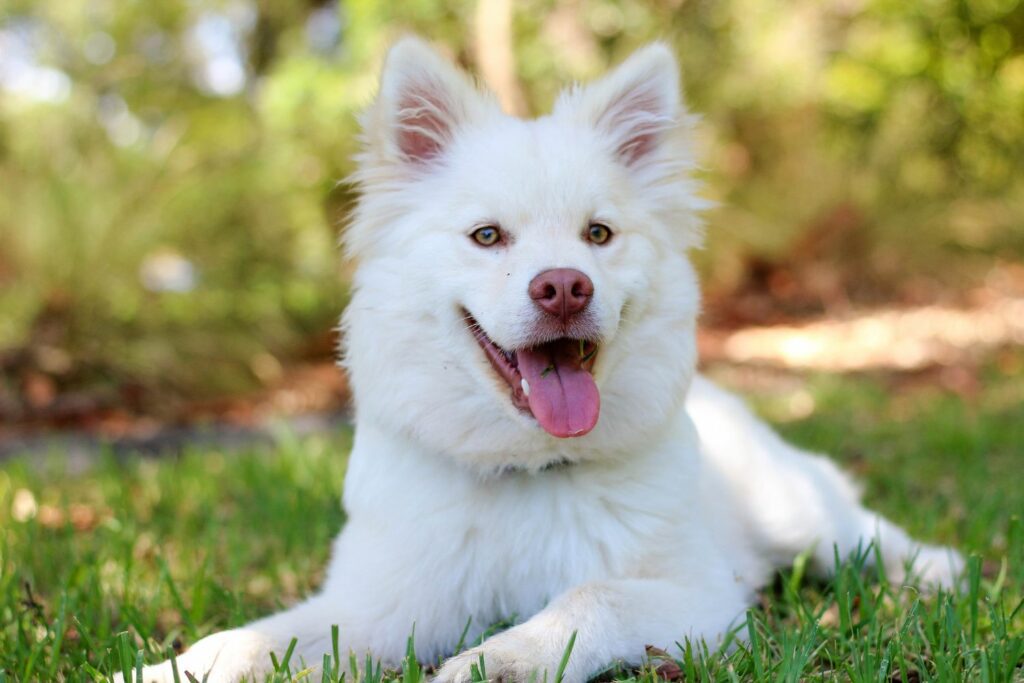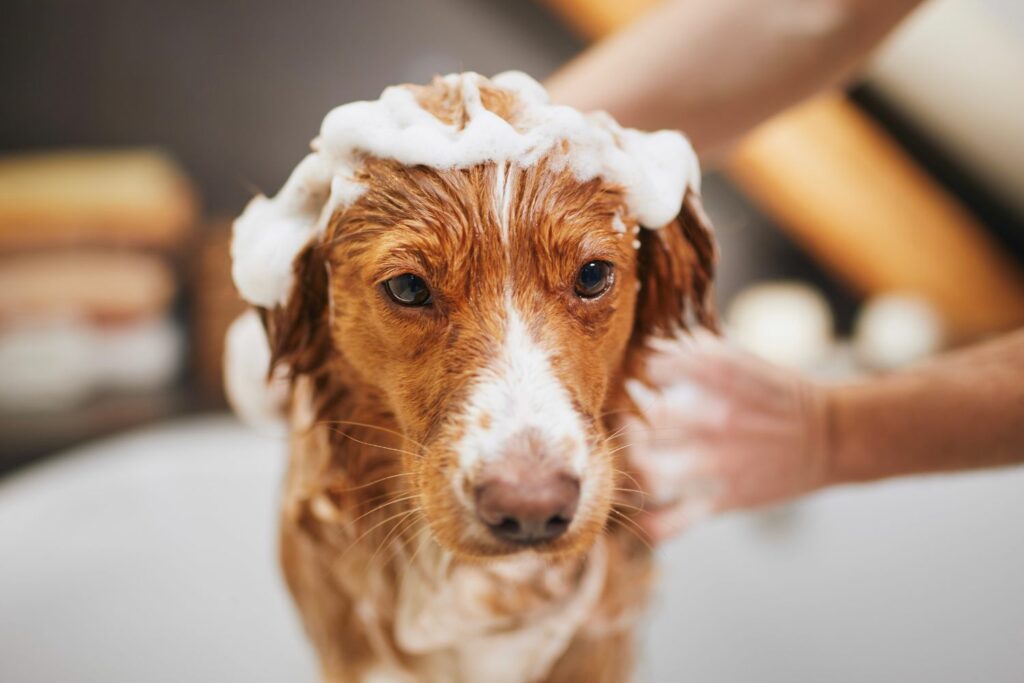Fungal infection in the skin and ears
 Cecilie Hemsen Berg
Cecilie Hemsen Berg
For many pet owners, the health and well-being of their furry companions are of paramount importance. One common concern that can often go unnoticed until it becomes problematic is fungal infections in dogs. Characterised by an overgrowth of naturally occurring yeast organisms on their skin and ears, these infections, mainly caused by Candida and Malassezia, can result in discomfort and various visible symptoms.
Why does your dog get a fungal infection?
Contrary to popular belief, a fungal infection in dogs isn’t contagious. Instead, it emerges from the imbalanced growth of naturally occurring yeast organisms, primarily Candida and Malassezia. These yeasts are normal inhabitants of a dog’s skin but can wreak havoc if they proliferate excessively.
- Candida: Commonly found in the mouth, nose, stomach, intestines, ears, and genital openings.
- Malassezia: Predominantly present on the skin’s surface and within the ears.
Factors Leading to Yeast Infections in Dogs:

- Underlying medical condition: like diabetes, flea bite allergies, food sensitivities, hormonal disorders such as Cushing’s disease, and seborrhea.
- Medication: extended use of immunosuppressive drugs like corticosteroids.
- Consistent licking: moist conditions due to excessive licking provide a conducive environment for yeast growth.
- Frequent swimmers: especially furry breeds that stay damp for extended periods.
- Predisposed breeds: Bulldogs, schnauzers, cocker spaniels, west highland white terriers, dachshunds, bassets, Maltese, and poodles.
- Altered skin pH: fungi and bacteria thrive in elevated skin pH levels commonly seen in dogs.
Symptoms of Candida and Malassezia
To accurately diagnose a fungal infection, vets might take skin scrapings, conduct blood tests, or analyze urine samples. Flea allergies or skin parasites are often the first suspected culprits of itchy skin in dogs. Symptoms Include:
- Yeasty body odour with greasy skin and fur.
- Red, inflamed, or elevated skin regions.
- Fur showing brown-red discolouration.
- Darkened skin patches (hyperpigmentation).
- Hair loss, dandruff, sores, and blisters.
- Skin irritation in ears and between toes.
- Itchy ears.

For dogs consistently licking their paws, the fur might acquire a reddish-brown hue. Ears may show signs of inflammation, produce excess earwax, emit unpleasant odours, or display behaviour like head shaking and rubbing against surfaces.
Treatment and Home Remedies
Addressing yeast infections in dogs requires a multi-faceted approach guided by your veterinarian. Initially, the focus is on alleviating the immediate symptoms, followed by addressing the underlying causes to prevent recurrence. For localized infections, topical treatments such as antifungal shampoos, creams, and ear drops are often effective. These treatments are formulated to combat the yeast directly and provide relief from itching and inflammation.
For more severe or chronic yeast overgrowths, veterinarians might prescribe oral antifungal medications. These systemic treatments work from the inside out, targeting the yeast throughout the body. In addition to medical interventions, it’s essential to identify and manage any contributing factors, such as allergies or underlying health conditions, that might be triggering the yeast overgrowth. A comprehensive approach, including regular check-ups, proper hygiene, and dietary adjustments, can help prevent future outbreaks and ensure your dog remains comfortable and yeast-free.

Home Remedies for yeast infections
For pet owners keen on natural treatments, there are several home remedies that can be effective in managing mild yeast infections in dogs. Apple Cider Vinegar (ACV) is one such remedy known for its antifungal properties. A diluted solution, typically one part ACV to four parts water, can be gently applied to the affected areas. It’s essential, however, to ensure the dog’s skin doesn’t have any open wounds or cracks before application, as the vinegar can cause stinging.
Another beneficial remedy is a saltwater wash. Salt can help in creating an environment that’s inhospitable for yeast. By boiling 1 litre of water with 3 tablespoons of sea salt, you can create a potent solution. Once cooled, this can be applied to the affected areas or used as a soak for infected paws. Additionally, maintaining a balanced diet for your dog, rich in antifungal foods like coconut oil and probiotics, can further support the body’s natural defenses against yeast overgrowths.
Coconut oil is an other home remedy that can be effective in combating yeast infections. Rich in medium-chain fatty acids, especially lauric acid, coconut oil possesses natural antifungal properties. Applying virgin coconut oil directly to the affected areas can provide relief from itching and reduce yeast overgrowth. Furthermore, incorporating a small amount of this oil into your dog’s diet can boost their immune system, making it more resilient against infections.
As with any remedy, it’s crucial to monitor your dog and consult with a veterinarian for the correct dosage and application method.

Preventing yeast infections
Prevention is pivotal. Adopting a proactive approach to your dog’s health can ensure early detection and intervention.
- Offer high-quality, nutritious food.
- Add supplements like essential fatty acids, vitamin C, and zinc to their diet.
- Establish a meticulous grooming routine.
- Ensure cleanliness and dryness of ears, fur, and paws.
- Employ flea and parasite prevention products. (Natural products like Pannatural Pets have shown promising results.)
- Regular vet visits with photographic documentation can be beneficial.
Maintain paw hygiene by trimming excess fur and ensuring they remain clean and dry. Lastly, always opt for dog-specific shampoos that are mild and pH-balanced.
Fungal infections in dogs, primarily involving Candida and Malassezia, can be a cause for concern but are manageable with the right care and attention. While these yeast organisms are a natural part of a dog’s skin flora, an overgrowth can lead to discomfort and noticeable symptoms. Understanding the root causes, recognizing the signs early, and adopting preventive measures are essential. With the right balance of professional veterinary care and home remedies, you can ensure your furry friend remains healthy, happy, and free from fungal infections.

